Fishes, Amphibians, and Reptiles -> weathering
Types of Weathering
There are three main types of weathering:
- Physical weathering: This occurs when rocks are broken down into smaller pieces without any change in their chemical composition. This can happen through processes like freezing and thawing, abrasion, and root wedging.
- Chemical weathering: Chemical weathering involves the breakdown of rocks through chemical reactions. This can occur through processes like oxidation, hydration, and carbonation.
- Biological weathering: Biological weathering is the breakdown of rocks by living organisms, such as plants and animals. This can happen through processes like root growth and burrowing.
Factors Affecting Weathering
Several factors can affect the rate and type of weathering:
- Climate: Temperature and moisture can affect the rate of weathering. For example, rocks in warm, moist climates may experience more chemical weathering.
- Rock type: Different types of rocks are more or less susceptible to weathering based on their mineral composition and structure.
- Topography: The slope and orientation of the land can influence the exposure of rocks to weathering processes.
- Biological activity: The presence of plants, animals, and microorganisms can contribute to biological weathering.
Study Guide for Weathering
When studying weathering, it's important to understand the different types of weathering and the factors that influence this process. Here are some key points to focus on:
- Define weathering and its significance in the rock cycle.
- Describe the three main types of weathering (physical, chemical, and biological) and give examples of each.
- Explain the factors that can affect the rate and type of weathering, such as climate, rock type, topography, and biological activity.
- Discuss the role of weathering in the formation of soil and sedimentary rocks.
- Explore real-world examples of weathering and its impact on landscapes and structures.
◂Science Worksheets and Study Guides Sixth Grade. Fishes, Amphibians, and Reptiles
Study Guide Fishes, Amphibians, and Reptiles
Fishes, Amphibians, and Reptiles  Activity Lesson
Activity Lesson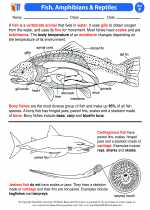 Fish, Amphibians & Reptiles
Fish, Amphibians & Reptiles  Worksheet/Answer key
Worksheet/Answer key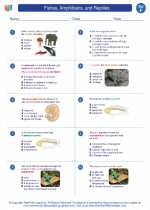 Fishes, Amphibians, and Reptiles
Fishes, Amphibians, and Reptiles  Worksheet/Answer key
Worksheet/Answer key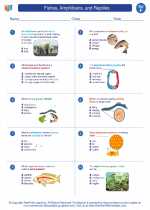 Fishes, Amphibians, and Reptiles
Fishes, Amphibians, and Reptiles  Worksheet/Answer key
Worksheet/Answer key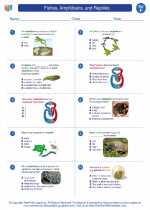 Fishes, Amphibians, and Reptiles
Fishes, Amphibians, and Reptiles  Worksheet/Answer key
Worksheet/Answer key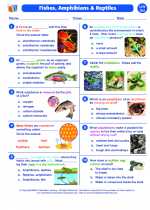 Fishes, Amphibians, and Reptiles
Fishes, Amphibians, and Reptiles  Vocabulary/Answer key
Vocabulary/Answer key Fishes, Amphibians, and Reptiles
Fishes, Amphibians, and Reptiles  Vocabulary/Answer key
Vocabulary/Answer key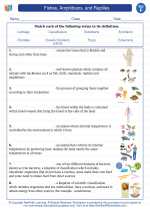 Fishes, Amphibians, and Reptiles
Fishes, Amphibians, and Reptiles  Vocabulary/Answer key
Vocabulary/Answer key Fishes, Amphibians, and Reptiles
Fishes, Amphibians, and Reptiles  Vocabulary/Answer key
Vocabulary/Answer key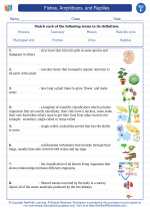 Fishes, Amphibians, and Reptiles
Fishes, Amphibians, and Reptiles  Vocabulary/Answer key
Vocabulary/Answer key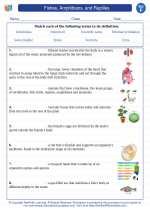 Fishes, Amphibians, and Reptiles
Fishes, Amphibians, and Reptiles 

 Activity Lesson
Activity Lesson
 Worksheet/Answer key
Worksheet/Answer key
 Worksheet/Answer key
Worksheet/Answer key
 Worksheet/Answer key
Worksheet/Answer key
 Worksheet/Answer key
Worksheet/Answer key
 Vocabulary/Answer key
Vocabulary/Answer key
 Vocabulary/Answer key
Vocabulary/Answer key
 Vocabulary/Answer key
Vocabulary/Answer key
 Vocabulary/Answer key
Vocabulary/Answer key
 Vocabulary/Answer key
Vocabulary/Answer key

The resources above cover the following skills:
LIFE SCIENCE
From Molecules to Organisms: Structures and Processes